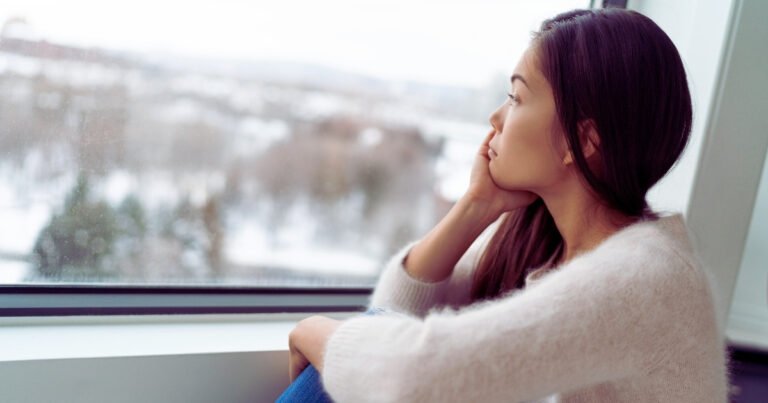Social media trends evolve rapidly, often capturing emotions and experiences shared universally across cultures. Among these trends, the rise of “Sad DP” (sad display picture) stands out. A term gaining traction among Gen Z and young adults, it refers to users setting melancholic or emotional images as their profile pictures.
But why has this trend gained such widespread adoption? Is it just a fleeting sensation, or does it reflect deeper societal and emotional undertones? This blog will explore the origins, implications, and psychology of “Sad DP” to better understand its relevance in today’s digital culture.
Table of Contents
What Does “Sad DP” Mean?
It is shorthand for a profile picture or avatar that conveys despair, sadness, or melancholy. These images often reflect personal emotions, artistic imagery, or snapshots of moments that evoke a sense of quiet reflection.
Common examples include the following types of images:
- Black-and-white portraits
- Rain-soaked landscapes
- Tear-streaked faces
- Quiet contemplative moments
- Abstract or symbolic visuals like autumn leaves or cracked glass
By setting these as their “Sad DP,” users share a mood or message that words may not fully articulate.
Why Is “Sad DP” Trending?
Several factors have contributed to the popularity of “Sad DP.” Here are a few key drivers behind the trend:
1. Self-expression through visuals
Images are one of the most powerful ways to connect emotionally in the digital landscape, allowing individuals to represent personal emotions or struggles without having to openly verbalize them.
2. The rise of aesthetic-driven culture
Platforms like Instagram and Pinterest have popularized visual storytelling, where aesthetics matter. A DP fits into curated feeds or aesthetic narratives that focus on raw, emotional, or authentic content.
3. Solidarity and Relatability
For many users, sharing a DP creates a feeling of solidarity during hard times. It’s a non-verbal way of saying, “I’m struggling too,” which resonates with friends or followers experiencing similar struggles.
4. Global cultural influences
Movies, music, and literature often highlight sadness in their stories. Atmospheric and melancholic themes in pop music (such as Lana Del Rey, The Weeknd, or lo-fi beats) and trending films like The Fault in Our Stars amplify the presence of sadness as an acceptable and artistic form of self-expression.
5. Mental Health Awareness
The growing emphasis on destigmatizing mental health naturally brings conversations about sadness to the forefront. Using a Sad display Picture can be seen as an individual stepping away from overly curated, perfect lives and sharing their emotional vulnerability.
Cultural Impacts of the “Sad Display Picture”
The rise of “Sad display picture” reflects societal shifts in how emotions are communicated online.
| Aspect | Impact |
|---|---|
| Digital storytelling | More users lean towards visual narratives to echo internal emotions. |
| Mental health advocacy | Encourages conversations about acknowledging sadness and emotional well-being. |
| Community building | Fosters camaraderie among individuals dealing with shared challenges like heartbreak or loneliness. |
| Artistic trends | Fuels the creation of art, photography, and visual media around themes of melancholy. |
How to Choose a “Sad Display Picture” That Resonates
If you’re considering joining the “Sad DP” trend but aren’t sure how to make an impactful choice, follow these steps:
1. Match the emotion you want to express
Think about why you’re setting a “Sad DP.” Is it heartbreak? Stress? Nostalgia? Choose an image that authentically mirrors your feelings.
2. Stick to symbolic imagery
Consider images that reflect a metaphor for sadness, such as overcast skies, empty roads, or blurred lights.
3. Use personal photos mindfully
Some users prefer raw self-portraits (e.g., tear-streaked selfies) for their authenticity. However, ensure you are comfortable sharing this level of vulnerability with your audience.
4. Experiment with black-and-white filters
Monochrome adds a timeless and emotional depth to your profile picture, amplifying its impact.
5. Empower creativity
You can edit your chosen image with apps like VSCO or Lightroom to give it a more polished, aesthetic feel while still retaining the melancholic vibe.
FAQs
1. Is using a Sad Display Picture a sign of poor mental health?
Not necessarily. For many, a “Sad DP” is simply a creative form of self-expression. However, if someone is consistently displaying sadness online, it’s worth checking in to see if they’re okay.
2. Why do some people criticize the Sad Display Picture trend?
Critics argue that normalizing sadness online could trivialize genuine mental health struggles. Some believe the trend may encourage performative behavior rather than addressing emotions constructively.
3. Can I use the “Sad DP” trend for storytelling purposes?
Absolutely! Many users tie their “Sad DP” to a story or caption, turning their profile picture into an extension of their narrative.
4. Are there ethical concerns around this trend?
If a “Sad DP” involves the face or likeness of someone else, ensure you have their permission. Avoid using culturally or historically sensitive images merely for aesthetic reasons.
5. How long do people usually keep a Sad Display Picture?
This depends on the individual. Some might change their profile picture after a few days, while others could use a “Sad DP” indefinitely.
What Does the Future Hold for the Sad Display Picture Trend?
Like most social media phenomena, “Sad DP” will evolve alongside changing dynamics in culture and technology. However, its existence reflects a broader movement toward authenticity and emotional connection in the digital space.
Participating in this trend might feel cathartic or help you connect with others, but it’s always important to stay mindful of the real-world implications of sharing your emotions online. Whether sad, happy, or in-between, digital expression should help us understand ourselves and the communities we engage with better.

